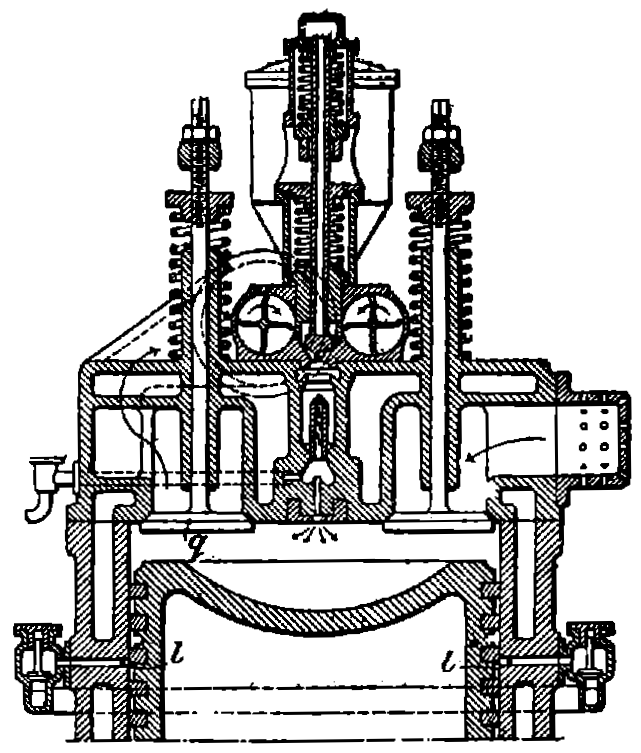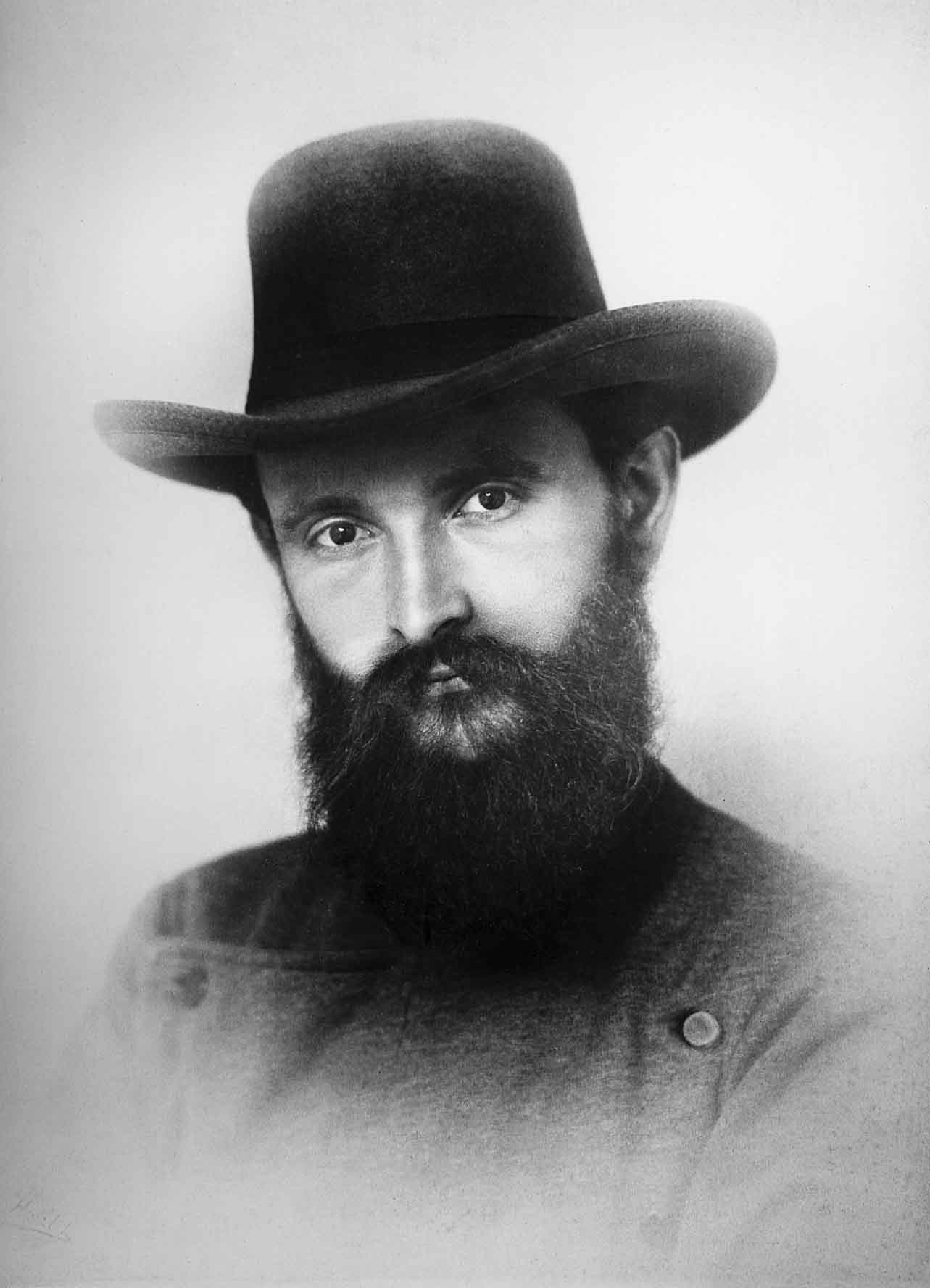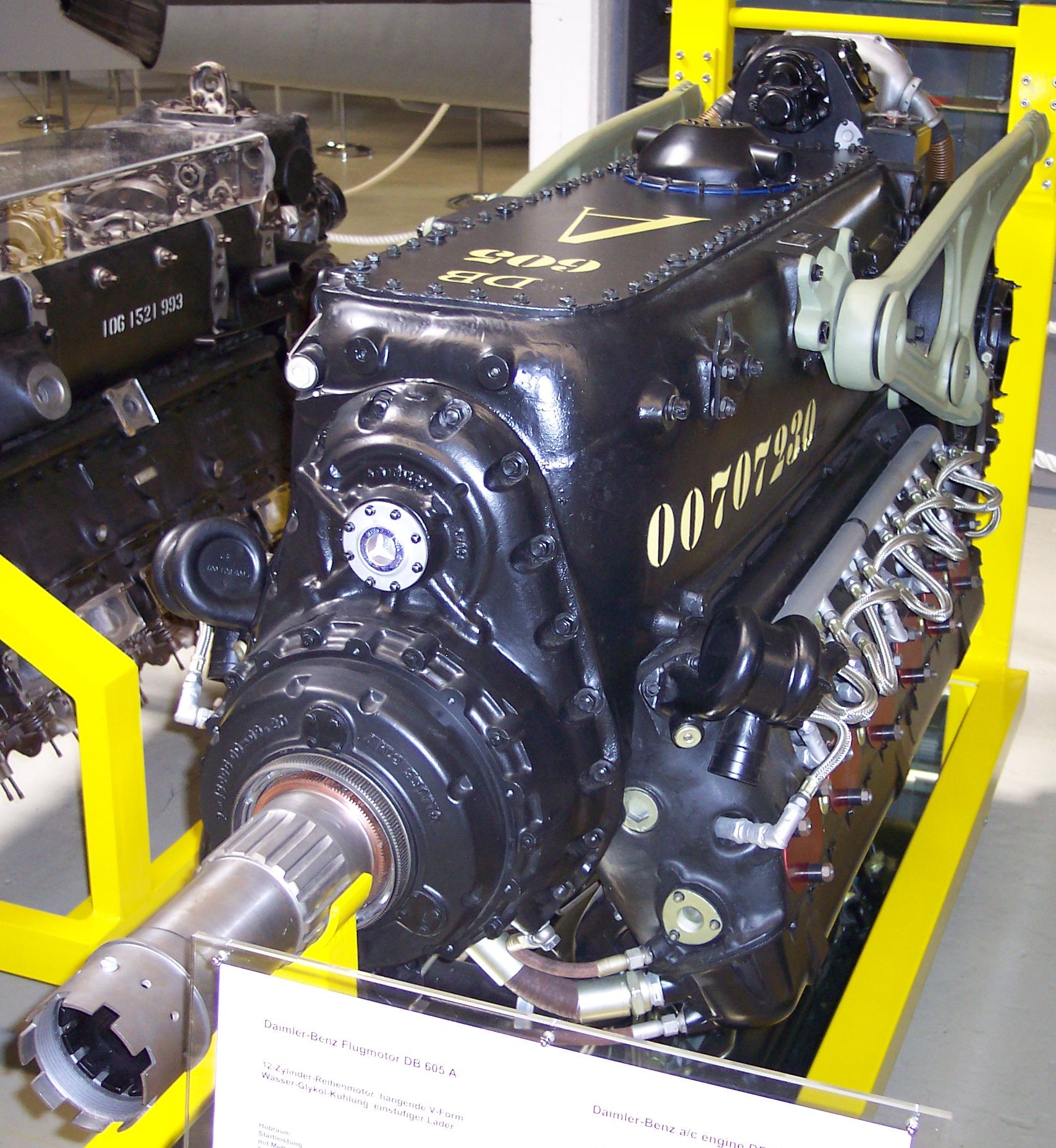|
Prosper L'Orange
Prosper L'Orange (born 1 February 1876, Beirut; died 30 July 1939, Stuttgart) was a German engineer and inventor who pioneered the precombustion chamber (or prechamber), which made possible high-speed diesel engines that did not require an air compressor, and enabled them to be built small enough for use in road vehicles. Career L'Orange moved to Germany and studied engineering at the Technical University of Berlin in Charlottenburg, Berlin. After his studies he worked for Gasmotoren-Fabrik Deutz AG as a research engineer from 1904, and from 1906 as research director. In October 1908, L'Orange moved from Deutz to Benz & Cie. in Mannheim, where he became head of Stationary Engine Construction. From 1912, on he was also a member of the Board of Directors. In 1909, while working at Benz, he patented a precombustion chamber (DRP 230517, 14 March 1909) which made possible compact, lightweight diesel engines. L'Orange was director of the Motoren Werke Mannheim AG (MWM) from 192 ... [...More Info...] [...Related Items...] OR: [Wikipedia] [Google] [Baidu] |
Beirut
Beirut, french: Beyrouth is the capital and largest city of Lebanon. , Greater Beirut has a population of 2.5 million, which makes it the third-largest city in the Levant region. The city is situated on a peninsula at the midpoint of Lebanon's Mediterranean coast. Beirut has been inhabited for more than 5,000 years, and was one of Phoenicia's most prominent city states, making it one of the oldest cities in the world (see Berytus). The first historical mention of Beirut is found in the Amarna letters from the New Kingdom of Egypt, which date to the 14th century BC. Beirut is Lebanon's seat of government and plays a central role in the Lebanese economy, with many banks and corporations based in the city. Beirut is an important seaport for the country and region, and rated a Beta + World City by the Globalization and World Cities Research Network. Beirut was severely damaged by the Lebanese Civil War, the 2006 Lebanon War, and the 2020 massive explosion in the ... [...More Info...] [...Related Items...] OR: [Wikipedia] [Google] [Baidu] |
Fuel Injection
Fuel injection is the introduction of fuel in an internal combustion engine, most commonly automotive engines, by the means of an injector. This article focuses on fuel injection in reciprocating piston and Wankel rotary engines. All compression-ignition engines (e.g. diesel engines), and many spark-ignition engines (i.e. petrol engines, such as Otto or Wankel), use fuel injection of one kind or another. Mass-produced diesel engines for passenger cars (such as the Mercedes-Benz OM 138) became available in the late 1930s and early 1940s, being the first fuel-injected engines for passenger car use. In passenger car petrol engines, fuel injection was introduced in the early 1950s and gradually gained prevalence until it had largely replaced carburettors by the early 1990s. The primary difference between carburetion and fuel injection is that fuel injection atomizes the fuel through a small nozzle under high pressure, while a carburettor relies on suction created by intake ... [...More Info...] [...Related Items...] OR: [Wikipedia] [Google] [Baidu] |
Harry Ricardo
Sir Harry Ralph Ricardo (26 January 1885 – 18 May 1974) was an English engineer who was one of the foremost engine designers and researchers in the early years of the development of the internal combustion engine. Among his many other works, he improved the engines that were used in the first tanks, oversaw the research into the physics of internal combustion that led to the use of octane ratings, was instrumental in development of the sleeve valve engine design, and invented the Diesel "Comet" Swirl chamber that made high-speed diesel engines economically feasible. Early life Harry Ricardo was born at 13 Bedford Square, London, in 1885, the eldest of three children, and only son of Halsey Ricardo, the architect, and his wife Catherine Jane, daughter of Sir Alexander Meadows Rendel, a civil engineer. Ricardo was descended from a brother of the famous political economist David Ricardo, a Sephardi Jew of Portuguese origin. He was one of the first people in England to see a ... [...More Info...] [...Related Items...] OR: [Wikipedia] [Google] [Baidu] |
Diesel Engine
The diesel engine, named after Rudolf Diesel, is an internal combustion engine in which ignition of the fuel is caused by the elevated temperature of the air in the cylinder due to mechanical compression; thus, the diesel engine is a so-called compression-ignition engine (CI engine). This contrasts with engines using spark plug-ignition of the air-fuel mixture, such as a petrol engine ( gasoline engine) or a gas engine (using a gaseous fuel like natural gas or liquefied petroleum gas). Diesel engines work by compressing only air, or air plus residual combustion gases from the exhaust (known as exhaust gas recirculation (EGR)). Air is inducted into the chamber during the intake stroke, and compressed during the compression stroke. This increases the air temperature inside the cylinder to such a high degree that atomised diesel fuel injected into the combustion chamber ignites. With the fuel being injected into the air just before combustion, the dispersion of the fuel is ... [...More Info...] [...Related Items...] OR: [Wikipedia] [Google] [Baidu] |
Robert Bosch GmbH
Robert Bosch GmbH (; ), commonly known as Bosch and stylized as BOSCH, is a German multinational engineering and technology company headquartered in Gerlingen, Germany. The company was founded by Robert Bosch in Stuttgart in 1886. Bosch is 92% owned by Robert Bosch Stiftung, a charitable institution. Although the charity is funded by owning the vast majority of shares, it has no voting rights and is involved in health and social causes unrelated to Bosch’s business. Bosch's core operating areas are spread across four business sectors: mobility (hardware and software), consumer goods (including household appliances and power tools), industrial technology (including drive and control) and energy and building technology. History 1886–1920 The company started in a backyard in Stuttgart-West as the ''Werkstätte für Feinmechanik und Elektrotechnik'' (''Workshop for Precision Mechanics and Electrical Engineering'') on 15 November 1886. The next year Bosch presented a ... [...More Info...] [...Related Items...] OR: [Wikipedia] [Google] [Baidu] |
Svenska Flygmotor
Swedish or ' may refer to: Anything from or related to Sweden, a country in Northern Europe. Or, specifically: * Swedish language, a North Germanic language spoken primarily in Sweden and Finland ** Swedish alphabet, the official alphabet used by the Swedish language * Swedish people or Swedes, persons with a Swedish ancestral or ethnic identity ** A national or citizen of Sweden, see demographics of Sweden The demography of Sweden is monitored by the ''Statistiska centralbyrån'' (Statistics Sweden). Sweden's population was 10,481,937 (May 2022), making it the 15th-most populous country in Europe after Czech Republic, the 10th-most populous m ... ** Culture of Sweden * Swedish cuisine See also * * Swedish Church (other) * Swedish Institute (other) * Swedish invasion (other) * Swedish Open (other) {{disambig Language and nationality disambiguation pages ... [...More Info...] [...Related Items...] OR: [Wikipedia] [Google] [Baidu] |
Messerschmitt Bf 109
The Messerschmitt Bf 109 is a German World War II fighter aircraft that was, along with the Focke-Wulf Fw 190, the backbone of the Luftwaffe's fighter force. The Bf 109 first saw operational service in 1937 during the Spanish Civil War and was still in service at the end of World War II in 1945. It was one of the most advanced fighters when it first appeared, with an all-metal monocoque construction, a closed canopy, and retractable landing gear. It was powered by a liquid-cooled, inverted-V12 aero engine. It was called the Me 109 by Allied aircrew and some German aces, even though this was not the official German designation. It was designed by Willy Messerschmitt and Robert Lusser who worked at Bayerische Flugzeugwerke during the early to mid-1930s. It was conceived as an interceptor, although later models were developed to fulfill multiple tasks, serving as bomber escort, fighter-bomber, day-, night-, all-weather fighter, ground-attack aircraft, and reconnaissan ... [...More Info...] [...Related Items...] OR: [Wikipedia] [Google] [Baidu] |
Daimler-Benz DB 605
The Daimler-Benz DB 605 is a German aircraft engine built during World War II. Developed from the DB 601, the DB 605 was used from 1942 to 1945 in the Messerschmitt Bf 109 fighter, and the Bf 110 and Me 210C heavy fighters. The DB 610, a pair of DB 605s geared to turn a single output shaft that replaced the similar DB 606, was used in the A-3 and all A-5 variants of Germany's only operational heavy bomber, the Heinkel He 177A. License-built versions of the DB 605 were used in the Macchi C.205, Fiat G.55, Reggiane 2005 and some other Italian aircraft. It was also used in the Swedish SAAB B 18B and initially in the pusher-design SAAB J 21. Approximately 42,400 DB 605s of all kinds were built. Design and development The primary differences between the 605 and 601 were greater displacement, higher revolutions, higher compression ratio and a more powerful supercharger. Engineers determined that the cylinders could be bored out to a larger diameter without seriously affecti ... [...More Info...] [...Related Items...] OR: [Wikipedia] [Google] [Baidu] |
Gasoline Direct Injection
Gasoline direct injection (GDI), also known as petrol direct injection (PDI), is a mixture formation system for internal combustion engines that run on gasoline (petrol), where fuel is injected into the combustion chamber. This is distinct from manifold fuel injection systems, which inject fuel into the intake manifold. The use of GDI can help increase engine efficiency and specific power output as well as reduce exhaust emissions. The first GDI engine to reach production was introduced in 1925 for a low-compression truck engine. Several German cars used a Bosch mechanical GDI system in the 1950s, however usage of the technology remained rare until an electronic GDI system was introduced in 1996 by Mitsubishi for mass-produced cars. GDI has seen rapid adoption by the automotive industry in recent years, increasing in the United States from 2.3% of production for model year 2008 vehicles to approximately 50% for model year 2016. Operating principle Charge modes The 'c ... [...More Info...] [...Related Items...] OR: [Wikipedia] [Google] [Baidu] |
Tognum
Rolls-Royce Power Systems AG is a German company owned by Rolls-Royce Holdings with holdings in engine manufacturing brands and facilities. The company previously traded, from 2006 to 2014, as Tognum AG. Prior to 2006, the core company – MTU Friedrichshafen GmbH – was a constituent of DaimlerChrysler Powersystems Off-Highway. History Tognum AG was formed when private equity fund EQT IV acquired in late 2005 several Off-Highway divisions of DaimlerChrysler. All units are to assume the corporate brand, but will otherwise operate independently."MTU Group To Operate Under New Name Tognum GmbH " ''''. 12 July 2006. ... [...More Info...] [...Related Items...] OR: [Wikipedia] [Google] [Baidu] |
MTU Friedrichshafen
MTU Friedrichshafen GmbH is a German manufacturer of commercial internal combustion engines founded by Wilhelm Maybach and his son Karl Maybach in 1909. Wilhelm Maybach was the technical director of Daimler-Motoren-Gesellschaft (DMG), a predecessor company of the German multinational automotive corporation Daimler AG, until he left in 1907. On 23 March 1909, he founded the new company, Luftfahrzeug-Motorenbau GmbH (Aircraft Engine Manufacturing Corp), with his son Karl Maybach as director. A few years later the company was renamed to Maybach-Motorenbau GmbH (Maybach Engine Manufacturing Corp), which originally developed and manufactured diesel and petrol engines for Zeppelins, and then railcars. The Maybach Mb.IVa was used in aircraft and airships of World War I. The company first built an experimental car in 1919, with the first production model introduced two years later at the Berlin Motor Show. Between 1921 and 1940, the company produced various classic opulent vehicles. ... [...More Info...] [...Related Items...] OR: [Wikipedia] [Google] [Baidu] |
MTU München
MTU Aero Engines AG is a German aircraft engine manufacturer. MTU develops, manufactures and provides service support for military and civil aircraft engines. MTU Aero Engines was formerly known as MTU München. History While the Munich-based engine manufacturer Rapp Motorenwerke, and subsequently BMW, had produced aircraft engines since 1913, the modern company regards the formal date of its formation as being 1934, the year in which ''BMW Flugmotorenbau GmbH'' was spun-off from BMW. This step was initiated by the Ministry of Aviation in order to disguise the planned rearmament of the Luftwaffe – as a standalone limited company the ''Flugmotorenbau GmbH'' had less strict disclosure requirements. Additionally, BMW aimed at outsourcing the unforeseeable risk of contributing to the German rearmament. In 1936, BMW built an aircraft engine plant in Allach near Munich, which are the headquarters of MTU Aero Engines today. In 1940, the plant was expanded significantly to start larg ... [...More Info...] [...Related Items...] OR: [Wikipedia] [Google] [Baidu] |






